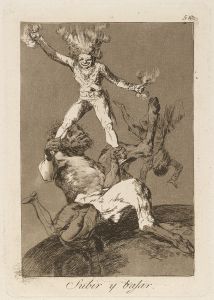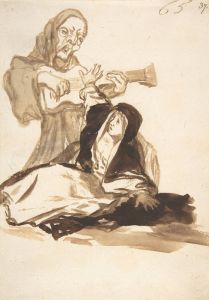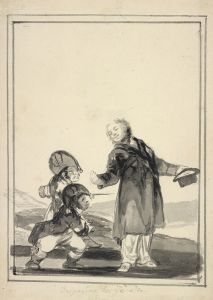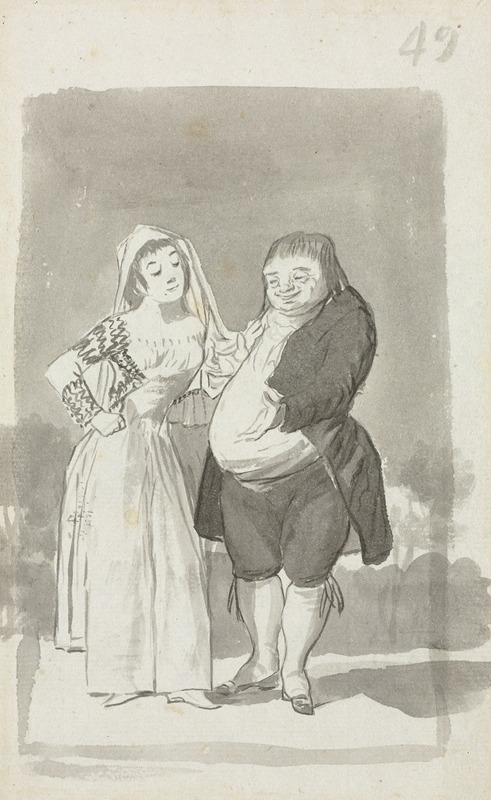
Prostitute Soliciting a Fat, Ugly Man
A hand-painted replica of Francisco de Goya’s masterpiece Prostitute Soliciting a Fat, Ugly Man, meticulously crafted by professional artists to capture the true essence of the original. Each piece is created with museum-quality canvas and rare mineral pigments, carefully painted by experienced artists with delicate brushstrokes and rich, layered colors to perfectly recreate the texture of the original artwork. Unlike machine-printed reproductions, this hand-painted version brings the painting to life, infused with the artist’s emotions and skill in every stroke. Whether for personal collection or home decoration, it instantly elevates the artistic atmosphere of any space.
Francisco de Goya, a prominent Spanish painter and printmaker, is renowned for his profound impact on the art world, particularly during the late 18th and early 19th centuries. Among his extensive body of work, Goya is known for his insightful and often critical portrayal of society. One of his lesser-known works is "Prostitute Soliciting a Fat, Ugly Man," which reflects his interest in social commentary and the human condition.
Unfortunately, there is limited information available about this specific piece, as it is not one of Goya's most documented or studied works. Goya's oeuvre includes a wide range of subjects, from portraits of the Spanish aristocracy to more satirical and critical depictions of societal issues. His work often delves into themes of morality, human folly, and the darker aspects of human nature, which aligns with the subject matter suggested by the title "Prostitute Soliciting a Fat, Ugly Man."
Goya's art is characterized by its bold use of color, dynamic compositions, and a keen eye for detail, all of which contribute to the emotional and psychological depth of his work. His ability to capture the complexities of human emotion and social interactions is evident in many of his paintings and prints. While specific details about "Prostitute Soliciting a Fat, Ugly Man" are scarce, it is likely that the piece employs these artistic techniques to convey its narrative and thematic elements.
Throughout his career, Goya was known for his willingness to challenge societal norms and critique the status quo. His works often reflect his personal disillusionment with the political and social structures of his time, particularly during the tumultuous period of the Napoleonic Wars and the subsequent Spanish Inquisition. This context is essential for understanding the broader themes present in Goya's art, including his exploration of vice, corruption, and the human condition.
Goya's influence on the art world extends beyond his lifetime, as he is often regarded as a precursor to modern art movements such as Romanticism and Expressionism. His innovative approach to composition, subject matter, and technique paved the way for future artists to explore more personal and introspective themes in their work.
In summary, while specific information about "Prostitute Soliciting a Fat, Ugly Man" is limited, it can be understood within the broader context of Francisco de Goya's artistic legacy. His work consistently challenges viewers to confront uncomfortable truths about society and human nature, making him a pivotal figure in the history of Western art.





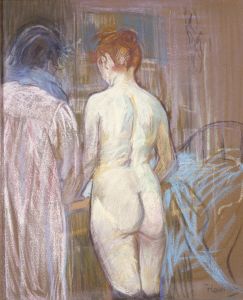
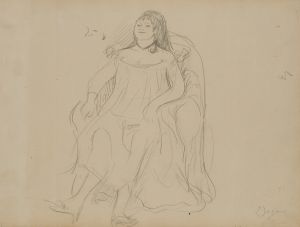

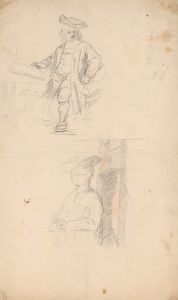
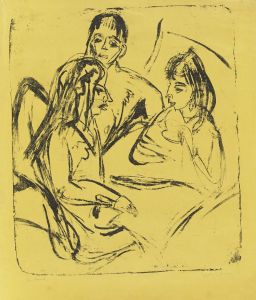
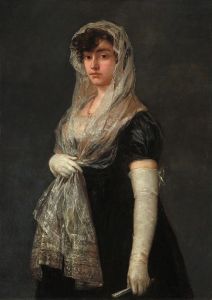
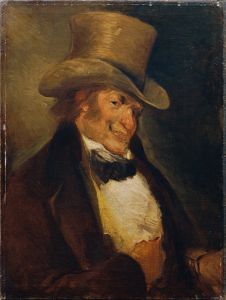
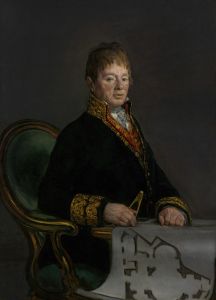
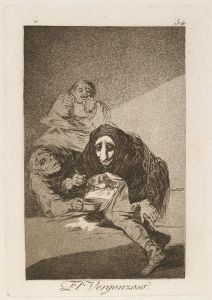
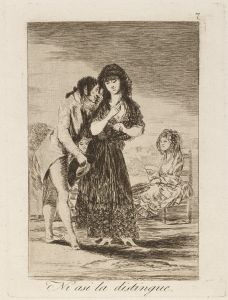
![Renounce the Friend Who Covers You with His Beak [Flying Folly]](/imgs/264650/s/francisco-de-goya-renounce-the-friend-who-covers-you-with-his-beak-flying-folly-e613558e.jpg)
